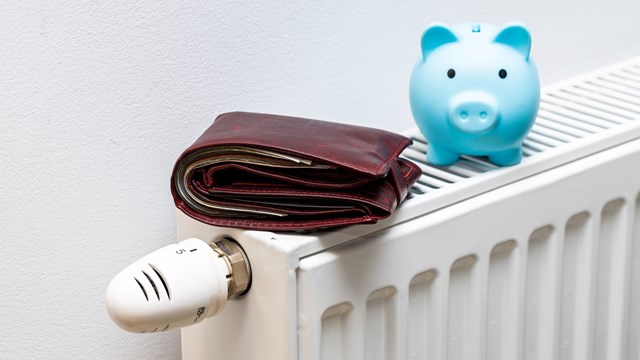
Creating and adhering to an operating budget is a delicate financial balancing act that boards, management, and staff do every year in buildings and associations all across the country. The object is to predict expenses, balance cash inflow and outflow, and keep a lid on unnecessary spending.
Types of Budgets
In the context of multifamily communities, there are two kinds of budgets: a capital budget, and an operating budget. Capital budgets apply to long-term, big-ticket projects like roof replacement or HVAC overhaul. By contrast, the operating budget primarily covers recurring, relatively predictable monthly expenses such as salaries, taxes, utilities, insurance and maintenance items.
“The operating budget is the yearly budget,” says Mohammed Salyani, a principal with accounting firm Wilkin & Guttenplan P.C., which has offices in New Jersey and New York. “It’s the budget for the day-to-day activities of running the association. It’s for things like the lawn, and janitorial services, security, and just regular repairs and maintenance and management fees. And if it’s a co-op, it also includes your underlying mortgage payments.”
Another schedule is known as deferred maintenance, which is something of a misnomer. “This is not what the name sounds like,” Salyani says. “It’s actually for the maintenance of items that occur less frequently than annually. So that could be things like painting, which you do every three to five years maybe; mulching, if you do it every two or three years; sealcoating for your roads… things like that.” The ‘deferred’ in the name means that these are things that could, in a pinch, potentially be deferred to next year, or the year after that without significant negative impact on the community or its property.
The final piece is reserves, also known as the replacement fund. “That is for major repairs and replacement, if you’re replacing your roof, redoing the roads, replacing your concrete sidewalks,” Salyani explains. “Those are the three budgets that, on average, most communities will have.”
The challenge, then, is to take all of this information into account – some of which simply comes down to informed speculation and educated guesswork – and build a workable operating budget.
“Typically you’re supposed to have all the systems of the building in the budget, but often boards will leave out certain items, because they basically say, ‘If it isn’t broken, we don’t have to fix it,’” says Simon Sarwa of Trillion Asset Management in Brooklyn. “Sometimes we see things that are supposed to be on a schedule get neglected or postponed because the board has other expenses it needs to address. For example, the exhausts for the dryers, or the mushroom vents. Each building is very different, but generally speaking, it’s things that don’t have to be in code compliance that get left out.”
First Steps
“Exactly when the budget is created depends on when the association’s financial year ends,” explains Peter Grech of the Superintendents Technical Association in New York City. “Most fiscal years end either in June or the last day of December, and most buildings begin creating a budget in October. Typically, the first draft of the budget is presented to the board in November. Then changes are made, and it’s re-sent to the board” for review.
The operating budget generally begins with the management company, which will start with a kind of framework, says Salyani. Existing contracts, which are easy to predict, are accounted for first. “Those contracts tend to be more fixed costs – like lawn maintenance, for instance. You know you’re paying X amount of dollars per month, for say, nine months. That’s fixed. So you have these contracts that are in place, and then you have historical data. If a community is paying $30,000 to $40,000 per year on average for general maintenance, they’re not going to go out there and budget $15,000, because that’s just unrealistic. So you look at historical data. Then there are things like increases for utility costs. These tend to be weather-related, but you look at the historical costs over a certain period of time. You also need to make sure that you’re taking into account your utility rates, and usually putting a small buffer in there in case they do rise.”
These estimates are then checked with professionals to verify that they make sense and don’t leave anything out. “Usually, on things that need to be code compliant, we will go to the respective trade” says Sarwa. “We’ll ask the fire alarm company if there’s anything happening [in terms of mandatory upgrades or installations], or the sprinkler company, or the elevator company if there are any new codes or requirements.”
Next to be considered are general upkeep costs. “We’ll consult with engineers or contractors with certain items in the building,” says Sarwa. “But typically they’re identified through concerns that have been brought up by the unit owners, the board, or even things that we see on our site inspection. We then discuss it with the appropriate professionals, and try to determine if this is something that needs to get done next year, or if it could be held off for another couple of years.”
“So you have historical information, you have your current contracts that are in place, and also in your operating budget, or annual budget, you have the allocations to the other two funds: the deferred maintenance and the replacement fund,” says Salyani. “This will typically be based on a study that’s done by an engineer.”
Another possible expense to take into account in an operating budget that boards often miss: bad debt. This is especially critical in smaller buildings. Yes, most unit owners pay their maintenance, but what if a critical mass of owners stop paying for some reason? This was a serious issue for many communities during the Great Recession, when job loss and other financial pressures compelled residents to choose between paying their maintenance or common charges, and other pressing bills.
“You’re going to have some people who are not paying their maintenance fees,” says Salyani. “If they’re not paying, you’re not collecting the cash that you anticipated to collect, so you’re not getting enough money to pay your bills or do the allocations to the funds that you need to. So you need to budget for bad debt expense if you have people who you know are not paying. So if your maintenance fee is $100 a month, and you have three people who are not paying, you multiply three times 100 times twelve months, plus whatever extra fees are involved like collection service fees or attorneys, and that’s what you need to put in your budget as an expense line item.”
On Reserve
In short, having adequate funds in reserve is critical. Not everything can be foreseen, and the replacement fund operates as something like an insurance fund—money put aside, to use the old expression, for a rainy day.
“We always advocate that within your operating budget you should include a contingency line item for unforeseen, unbudgeted expenses,” says Salyani. “Because there can absolutely be things that you have no idea about. This is not for major repairs; those would still come out of your reserve, or in the case of a disaster, maybe you can get some money from your insurance. But if you have some unexpected repairs that aren’t major, just within your day-to-day activity, you could use this contingency line item money to do that.”
The question is, how much to set aside? “There are many different schools of thought on this,” says Grech. “Many say that one month of income should be set aside in a reserve fund, which others recommend three months. Some buildings have as much as six months of income in reserve.”
Sarwa recommends this more conservative figure. “Some accountants say, as a rule of thumb, that they like to see six months worth of collections in the reserves,” he says. “But because we also have to make sure that the buildings are in compliance with the lenders—and because if a unit owner wants to refinance, or if they want to sell their place, most of the time the banks are looking for 10 percent of the total common charges billed annually, to go into the reserves. The accountants usually tell us that depending on the size of the building, how we’re reviewing the operating expenses with them, and what we think is going to happen, most of the time we’ve seen that about six months’ worth of collections as a good number to start with. It doesn’t mean that they shouldn’t increase that figure or think about doing more than six months—but that’s in addition to the 10 percent that’s collected to be in compliance.”
Cutting Costs
Between the relatively stable nature of residential buildings, the ample amount of historical data on hand to study, and the professionalism of the people creating the budgets, there is not much wiggle room for cutting costs. But this doesn’t mean it can’t be done. Every little bit helps, after all.
“Many times with compliance, we try to find companies that are competitive,” says Sarwa. “Obviously we make sure that the companies are reputable, that they’ve been around for a long time, they have a history and so forth. Usually from a compliance perspective, that’s where we look.”
Another potential money-saver may lie in careful analysis of a building’s spending and usage habits. “If water and sewer costs seem to be high, usually we will recommend consulting with a water management company to look further into the matter to see how we can reduce that. And if we need building supplies, we can shop around to other companies, but obviously looking to compare apples to apples, and not apples to bananas—which happens a lot when people are trying to save costs,” Sarwa says.
Changing vendors can be dicey, however. “I tell my clients that cheapest is not always best,” Salyani says. “You might go out and get three bids, and two are close to each other and the other is very low, but if it seems too good to be true, it usually is. You need to make sure that whoever you go with is providing you good service. I’ve seen associations that choose a certain landscaper because they’re much cheaper, but then two years later the lawn is a mess, and now they have to go back to somebody else to repair, and it’s going to cost them more.”
Capital improvements are another place where money may be saved. Upgrading lighting to LED, for example, is a good way to save in the long run. “Automatically the project itself will save them money, but that’s rate of return on their investment,” says Sarwa. “So the more they look to go into it and get involved, they’ll see a rate of return.”
Sometimes, the forecast is off in the other direction, and the building winds up with a surplus. This is, of course, a lovely problem to have.
“Associations are supposed to have zero-based budgets, so from a tax point of view, any surpluses in any given year should be used in future years,” says Salyani. “It should roll forward. The tax guidelines say that you should roll it forward into the next year as operating surplus carried forward. We do tell people to keep a small buffer for unforeseen stuff, but otherwise, if there is a surplus you should use it up in future budgets.”
Greg Olear is a freelance writer and author, and a longtime contributor to The Cooperator.









Leave a Comment